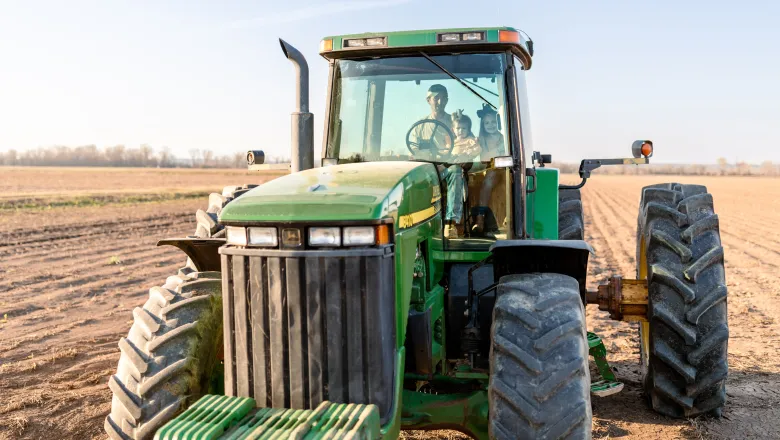Managing the Risk of Private Party Equipment Transactions

Farm Management Resources
Financial Literacy
Buying used equipment for your operation is challenging. You searched everywhere, but could not find what you were looking for at a price you were willing to pay. Finally, you heard that a farmer in a nearby county was selling what you needed at a good price. The equipment was in great condition. The owner was easy to talk with and agreed on your price. You paid them and took the equipment home with you. It almost seemed too easy…
Later, you heard the seller was in financial trouble. You got a repossession notice for the equipment you purchased. The seller owed money against the equipment and had not paid the debt. Your attorney confirmed the lien is valid. Short of paying the debt yourself, there is no way to keep your equipment or get your money back. The only option is to try to collect from the seller, but unfortunately, you are in a long line of people trying to get paid in this scenario.
Private party sales are a regular occurrence, one that usually works great, but fraud is on the rise due to advancements in technology and artificial intelligence. Also, sometimes people mistakenly sell things they legally cannot sell. Farm equipment does not have a title the way a personal vehicle does, so buying from a private party, rather than a reputable dealer or auction company, is considered a “buyer beware” transaction. We have all heard, “If it seems too good to be true, it probably is.” Everyone’s risk tolerance is a little different. Eliminating all risk when purchasing equipment privately is difficult, but the following precautions can help to reduce your risk:
- Gather as much information as you can about the seller. Check the appropriate government records on business entities, such as an LLC or corporation. Make sure those entities are legitimate, in good standing and see if the officers or managers are listed.
- Ask the seller for the bill of sale or invoice from when they purchased the equipment to ensure the manufacturer, model number and serial number match what you are buying. Recently purchased equipment is more likely to have a lien against it, so look closely at the invoice for clues that the equipment was financed at purchase. Loans often show on the invoice.
- Do your homework on the equipment. Use the model number and serial number to check manufacturer records with a local dealer. Ask law enforcement or use an online resource to check the stolen equipment database. Stolen equipment is returned to its rightful owner similar to a repossession.
- Do a lien search to find where the equipment is owned and stored. You can usually check online or use a professional service to search for you. Keep in mind, a lien against “all equipment owned” means that what you are buying has to be formally released from the lien.
- Get a bill of sale signed by the seller and buyer. Ensuring the names are correct and the right person(s) sign on behalf of an entity is essential. The bill of sale should include the price, make, model and serial number for what you are buying, including any added attachments, such as a loader. The bill of sale should state that the equipment is free and clear of all liens. As an extra safeguard, you can require proof that any known liens have been paid and released as part of the transaction.
- Pay with a check or wire to help document the transaction. Requiring cash may be a “red flag” that the seller does not want the proceeds tracked for some reason.
Buying the right equipment should be a positive experience. Take the appropriate precautions to protect yourself and your business. As the old axiom says, “An ounce of prevention is worth a pound of cure.”
If you have questions about purchasing equipment from a private party, financing through Farm Credit EXPRESS or leasing options, reach out to Scot Lilly by calling 540.434.7035, ext. 5233, or emailing Scot.Lilly@FCVirginias.com.
This article was published in the Winter 2024 Leader Magazine. Access the full magazine (digital version) HERE.